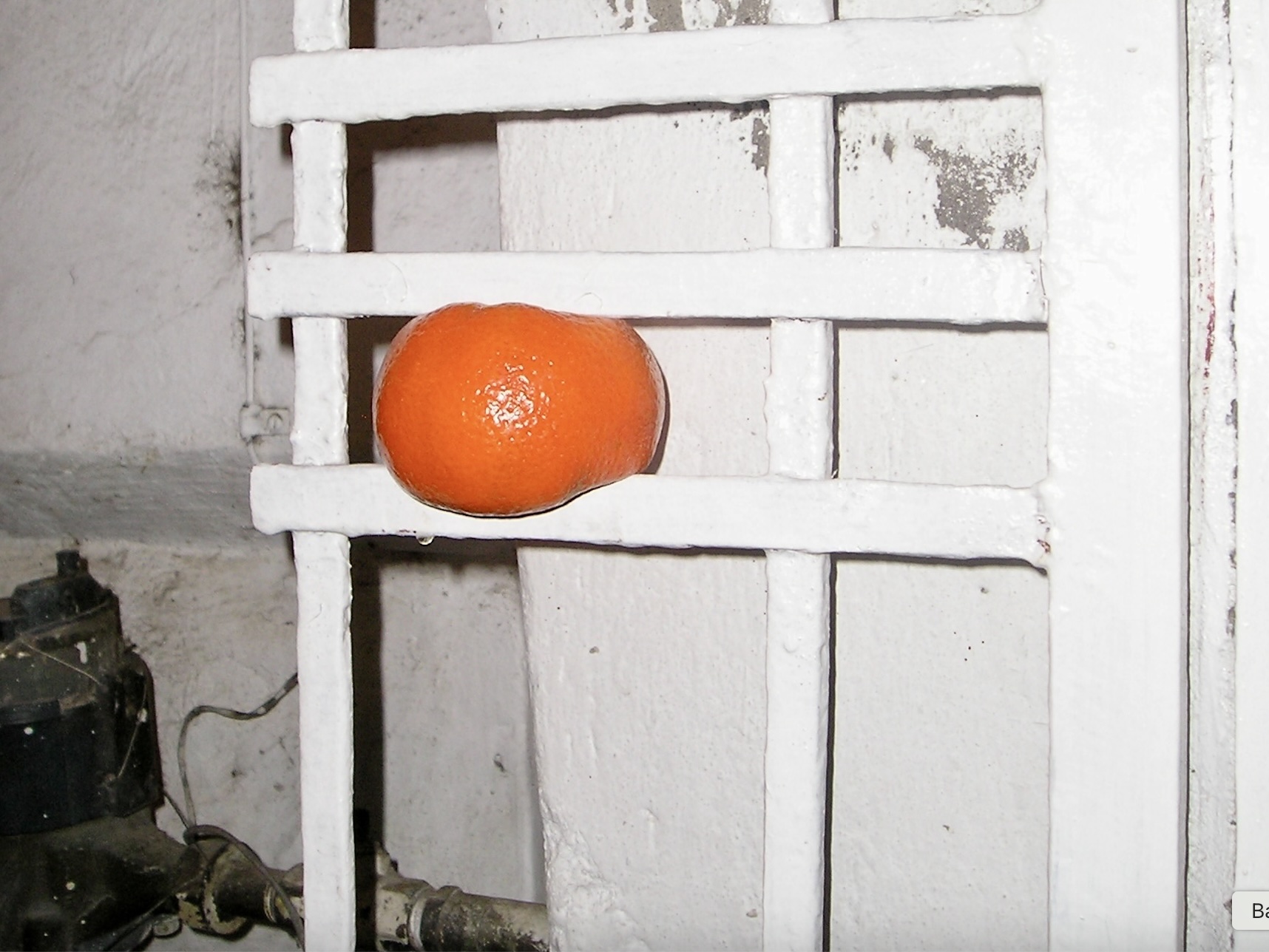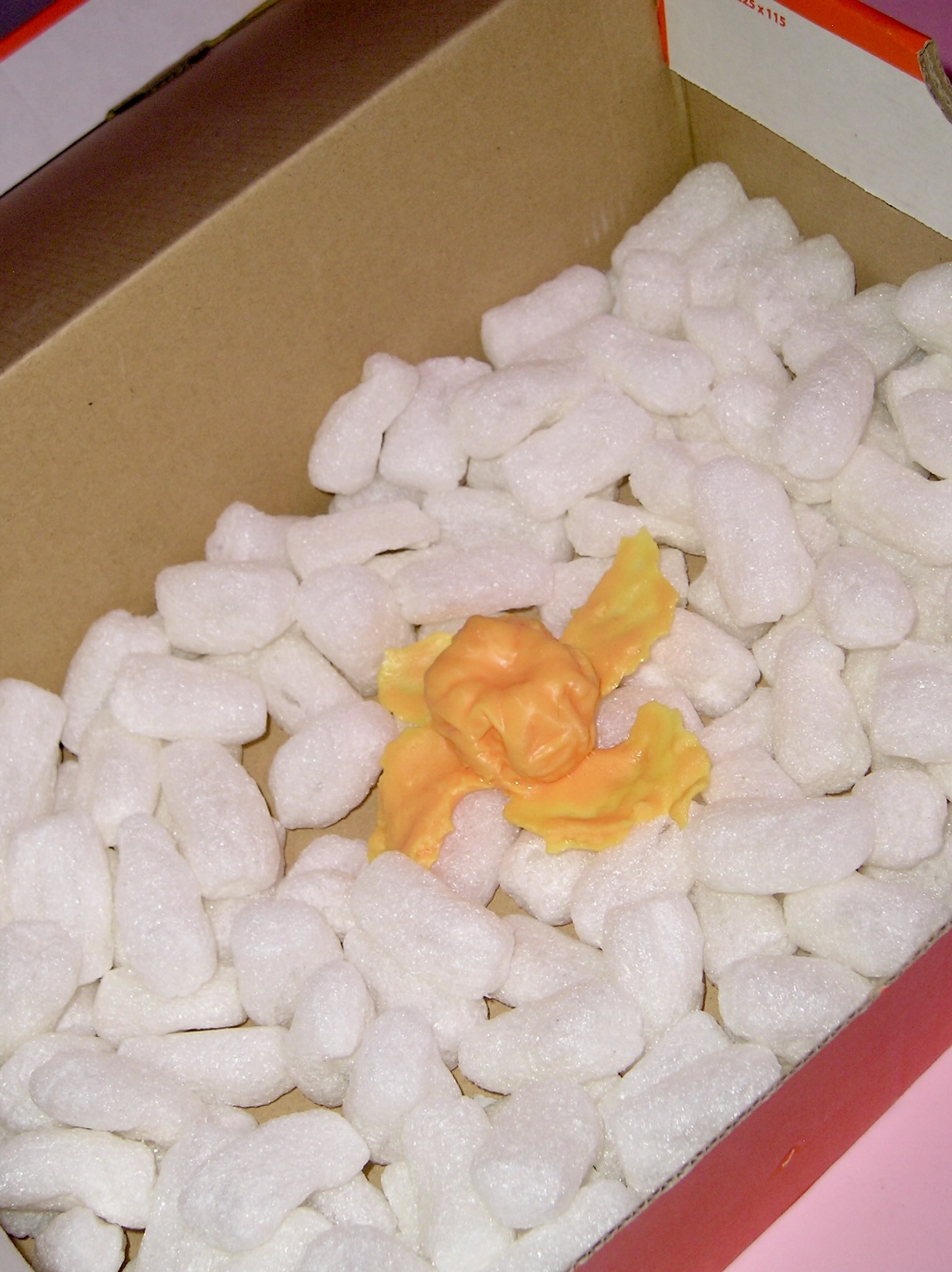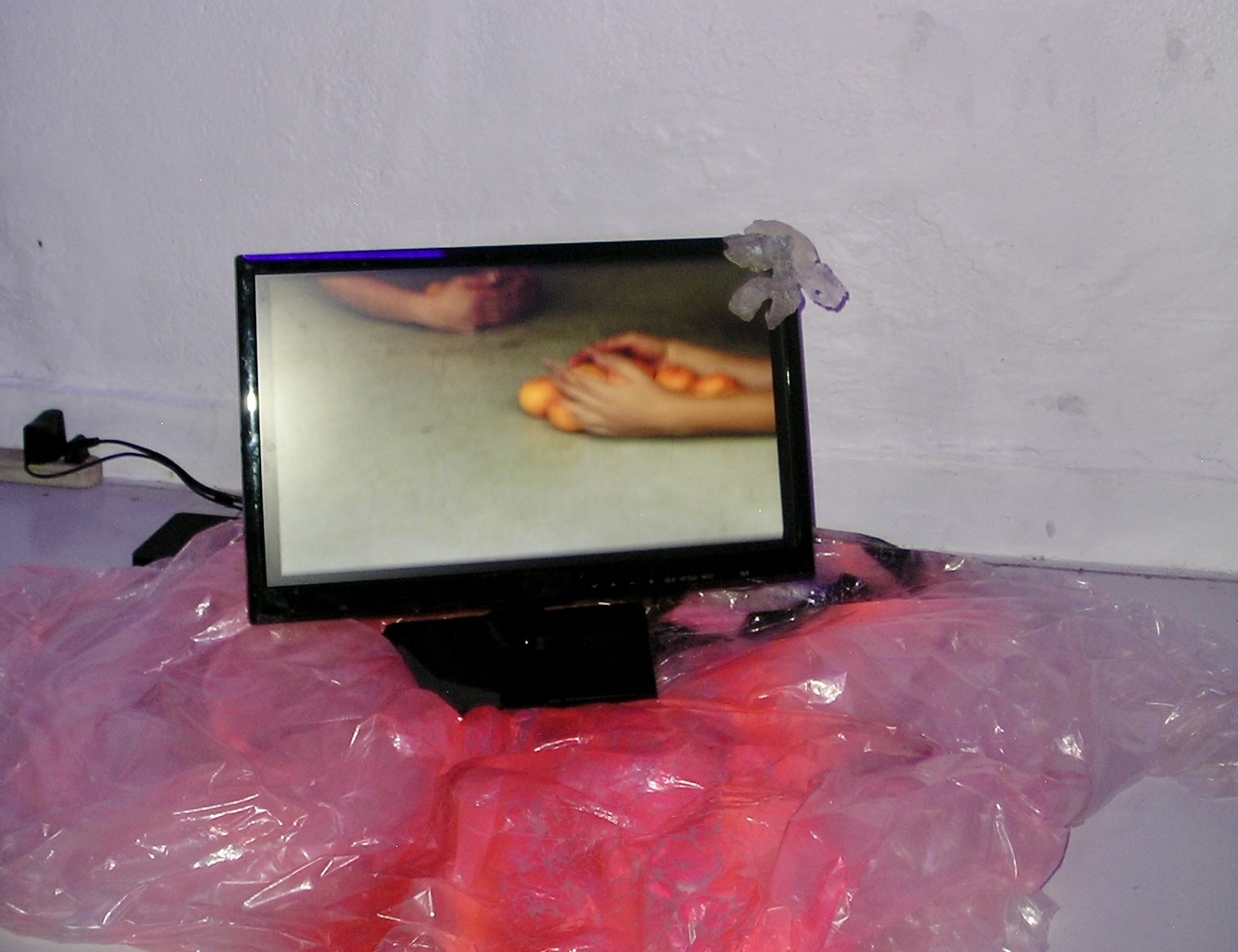
Review
Doing and Continuing to Do: On 'Despliegue Iztaccíhuatl' by Michelle Sáenz Burrola
by Lia Quezada
At Biquini Wax
Reading time
4 min
The exhibition begins with the artist’s most recent work: a 3D-printed plastic tangerine, carefully stored in a shoebox. Scissors can be heard, an obsession-souvenir from her residency at the Newberry Library in Chicago, where she spent days printing and cutting out maps. The noise coming from the back of the gallery prompts me to search for the hallway. Through the window, I see a closet reminiscent of a teenage bedroom, complete with a pink light and an exercise machine. The doors and walls are plastered with enlarged images of the artistic references Michelle identifies as formative: Faith Wilding, Mónica Mayer, Lorena Wolffer, Pola Weiss, Galia Eibenschutz, and Rey Ángeles. In other words, the closest thing to her current work—which, rather than a finished piece, is the direction she envisions for the next years of her practice—is rooted in her oldest influences, her foundational myth.

Then, there’s the main room, where five cell phones, two monitors, and a TV simultaneously loop various video essays and performance documentation led by Michelle. The fabric used to cover the five performers in Iztaccíhuatl en erupción [Iztaccíhuatl Erupting] (2019–2021) is repurposed—and thus re-signified—so that visitors, while eating "explosive candies" with "extravagant strawberry" flavor, can watch the videos through the various holes in the fabric. On the floor, plastics, tulle, sequins, and polyurethane intestines frame the TV, representing the volcano’s lava. The tangerine from the beginning reappears: on the walls and over the screens, there are iridescent segments and peels. Everything moves, makes noise, shines, and reflects.

What seems to run through Michelle's work is an obsession with the shift between mediums and the inevitable distortion that comes with it: in Azul, rojo, negro [Blue, Red, Black] (2018), she moves from drawing to dance; in Y si distorsionamos esta cartografía [And If We Distort This Cartography] (2022) and Ensayo sobre mapas [Essay on Maps] (2021–2024), she studies the flat representation of spherical forms; Iztaccíhuatl en erupción (2019–2021) was first a research project, then a performance, then a video, and now the core of her first solo exhibition.
Despliegue Iztaccíhuatl [Unfolding Iztaccíhuatl] is, in some way, a retrospective: it gathers the artist's most significant works, but not to commemorate her trajectory—rather, to celebrate her brilliant starting point. Michelle has left traces of herself everywhere: clothes and shoes used in the performances, tangerines hidden in unexpected places, just like in 2022 when she intervened in the collective exhibition Venga le digo [Come, I’ll Tell You] in this same gallery. At least ten of us are wearing orange socks, a tribute or nod to Caminata cardumen [Shoal Walk], which took place in the Historic Center last year. This vulnerability—confessing where she believes she comes from and where she thinks she’s headed, offering a poem and a letter to Iztaccíhuatl as curatorial text, showing works that are still in process, in short, opening her heart in this way—is only possible in a few spaces, among them Biquini Wax.

This exhibition closes the cycle called Sala de exhibición [Exhibition Room], preceded by El infinito ensayo [The Infinite Rehearsal] by Odeth Sofía and As seen on TV by Adolfo Cisneros Medina. Gerardo Contreras, who programmed these shows, was interested in presenting the work of artists with one foot in cultural management or social projects, opening the space to practices less individualized than, for example, painting. This idea has attracted him since he curated La institución del relajo [The Institution of Relajo]* for Deviant in 2021, where Michelle also exhibited. On that occasion, she proposed a different approach to the classic tension between work and play: the idea of "relajo"—a concept embedded in the Mexican subcultural imagination—as a practice that allows for more fluid structures within rigid spaces, including institutions.
Michelle Sáenz Burrola’s work, assembled for Biquini Wax with the curatorial support of Catalina Urtubey, invites us to delve into the recent history of an artist’s curiosity, to marvel at the capacity to create with what’s at hand, and to rethink cartography from a critical—or perhaps, citrus—perspective.
Translated to English by Luis Sokol
* In the context of the exhibition and the curatorial approach described, "relajo" is used to describe a practice that disrupts rigid structures or formalities. It suggests an attitude of playfulness or informality that challenges or loosens the boundaries of traditional institutions or conventional ways of working, allowing for creativity and spontaneity.
Published on October 31 2024